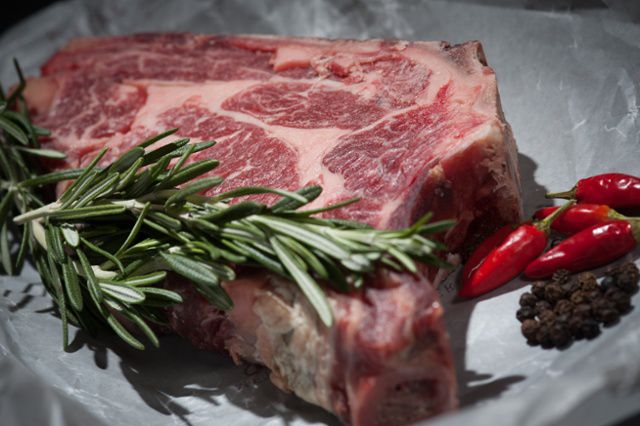Add Steak to Your Food Shopping List
Published
1/26/2017
By Julie Murphree, Arizona Farm Bureau Communication Director: Arizona families and
Those were major points made by Dr. Karl Skold, head of agricultural economics at JBS, at a workshop at the American Farm Bureau Federation’s 2017 Annual Convention & IDEAg Trade Show in Phoenix earlier this month. Skold said a historically unusual situation of expanding herds, growing
In Arizona, Arizona Farm Bureau’s fourth quarter food
Compared to Arizona’s December 2015 fourth quarter survey total of $51.15, the 2016 fourth quarter Marketbasket survey showed that Arizona’s food prices have decreased about 8 percent year-to-year. The lowest price survey in nine years was the fourth quarter survey in 2010 at $45.44.

Livestock economists are seeing a big jump in eating meat including a shift to steaks because prices are so good for the consumer at the retail meat counter.
“Not surprisingly, the majority of our food proteins are down in price,” says Julie Murphree with Arizona Farm Bureau. “If you look at just the beef market, in two short years cattle markets have flipped from record highs to depressing lows. While it’s hurting the bottom line of our ranchers throughout the country, you and I should find good beef prices at the meat counter.”
Further Livestock Products Outlook
“Start with lower feed costs,” Skold said, “And the economy continues to improve. We are nearing full employment and wages are picking up.” Skold said these trends are showing up in how consumers are making meat choices.
“We are seeing a big jump in eating meat but we are also seeing a shift to steaks,” Skold said. “We haven’t seen this big a jump in demand in a long time.”
This is encouraging news for cattle producers who have seen steep declines in cattle prices from record-highs only a year ago.
The situation with pork is similar, Skold said, and pork has been profitable until a fourth quarter drop last year. Per
Skold also said that per capita consumption
“You go to the meat case and you see $5.99 steaks, you’re going to buy them,” he said. “You see $9.99, we’re going to feed the Johnson’s coming over chicken.” But Skold
Skold said exports would be a huge factor in continuing health for the livestock sector. There are what he called “headwinds,” starting with a strong U.S. dollar against most other currencies.
Other nations cannot buy as much U.S. meat with their own currencies. He said that many of the gains in U.S per capita consumption have already been realized. The industry may have to seek additional gains in the export market. “You have the population increasing at six-tenths or eight-tenths per year and you get supply increasing 4, 5 or 6 percent you’re going to have to export it.”
Skold says Arizona families should see many opportunities to stock up on beef and pork as huge supplies will encourage demand. “Consumers have really returned and are eating more meat,” he said.